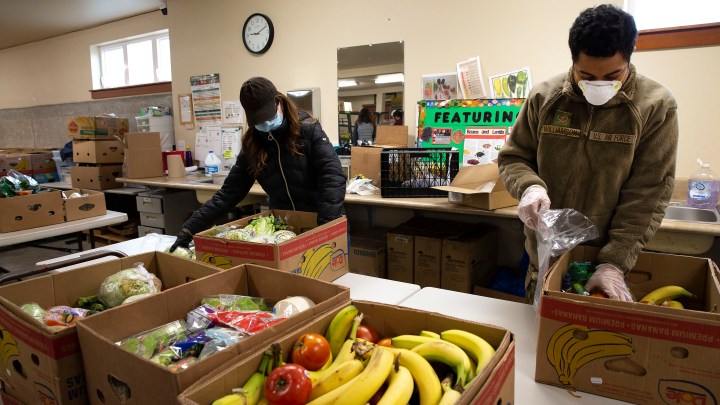
Rural food banks find ways to deliver during pandemic
Rural food banks find ways to deliver during pandemic

For much of her life, Rebekah Lane has lived half an hour from the nearest grocery store.
“When money’s not tight, that’s not a bad trip,” said Lane, 38, who was born and raised in rural, midcoast Maine.
But there have been plenty of times in Lane’s life, both before and during the pandemic, when money has been tight enough that she couldn’t make that half hour drive.
“When you have $5 to get you through for extra funds, and that gets you gas for the month, you can’t always go to the grocery store every week,” she said.
Which meant Lane often couldn’t get the kinds of foods her kids, who are 6 and 10, love the most — raspberries and apples, sugar snap peas and baby carrots.
“It was, you know, 99 cents for a bag of carrots,” she said. “But I couldn’t get to the store, or I didn’t have the funds to be able to stretch it.”
For millions of low-income people living in rural areas around the country, getting to a grocery store or a food bank can be a major barrier to getting enough to eat.
“They have to plan out their shopping trips based on their income, receipt of benefits, transportation issues and work schedules. And so they’re juggling all of those factors,” said Lauri Andress, a professor in the School of Public Health at West Virginia University.
While that has always been true, Andress said, “we know for a fact that COVID just made food harder to get, especially for rural populations.”
Especially after schools shut down and kids were no longer getting free breakfast and lunch at school.
Early on in the pandemic, food banks and pantries that serve rural communities realized they had to figure out how to bring food to people.
“We need to make sure we’re reaching all those far-flung areas,” said Kristen Miale, president of Good Shepherd Food Bank in Maine, which partners with hundreds of local food pantries and nonprofits across the state.
Before COVID-19, “our partners have said, you know, ‘I don’t think we could do home delivery. We can go through the list of challenges with doing home delivery,’” Miale said. “COVID forced people to move to home delivery, because they knew that there were people who just could not get to the food pantry.”
Food insecurity has gone up all across Maine since the pandemic began, according to Miale. So have donations to the food bank, which has allowed them to meet the increase in need — so far.
“We’re not an outlier,” Miale said. “Food banks across the country are seeing this heightened public awareness of the issue of hunger, and that’s really translated to an increase in donations across the board for our network.”
The influx of money has allowed many organizations to buy and distribute more food in more places.
Rebekah Lane of Maine said her local food bank “switched from a monthly to, ‘if you need food, come see us’ situation during the pandemic,” she said. “And they went from being able to provide a small amount of food to being able to provide more fresh stuff.”
That, and the move into home deliveries, are two things that have come out of the pandemic that Miale hopes won’t go away.
There’s a lot happening in the world. Through it all, Marketplace is here for you.
You rely on Marketplace to break down the world’s events and tell you how it affects you in a fact-based, approachable way. We rely on your financial support to keep making that possible.
Your donation today powers the independent journalism that you rely on. For just $5/month, you can help sustain Marketplace so we can keep reporting on the things that matter to you.












